Shortbread is a glorious mix of butter, sugar, and flour, creating a melt-in-your-mouth cookie. I added lemon, and it became even better, with a nice zing cutting through that buttery amazingness. The dough can be refrigerated for a day before baking, and the baked shortbread keeps very well. A great holiday gift idea.

I love shortbread. It's so easy to make and so difficult to screw up!
Adding citrus zest makes it stand out.
There's a nice acidity that cuts through all that butter and sugar in the best way. We can certainly agree that shortbread is a rich cookie.
- Simple ingredients.
- Easy to make: the dough is patted onto the pan, so it's easier to make than shortbread lemon cookies that must be cut and glazed individually.
- Make ahead: you can make the dough a day ahead, pat it in the pan, cover it and refrigerate it until ready to bake. After it's baked, it keeps well in an airtight container, a metal tin preferably.
- Serving it: it can be used to accompany ice cream, to serve with after-dinner coffee, or simply as part of a dessert table with other more sophisticated recipes.
This recipe today uses powdered sugar for the dough and a small amount of granulated sugar for sprinkling the shortbread before baking; it creates a crunchy crust and a nice, golden color.
This recipe is a twist on the traditional one and a cousin to these fabulous buttery lemon shortbread cookies we love so much.
Readers Reviews
Absolutely divine! We opted to leave off the granulated sugar and then used fresh lemon juice mixed with powdered sugar to make a glaze, as suggested. It's so lemony and tart and perfect!
- Suzette
Great recipe—so good it’s hard to share! I added a few drops of lemon extract to enhance the lemon flavor even more. It's so easy and delicious! Thanks for sharing!
- Joan
I made this for the Fort Campbell culinary team as a dessert for one of our important meals. I used it as a crust. Needless to say, the crust was the best part.
- Dantia
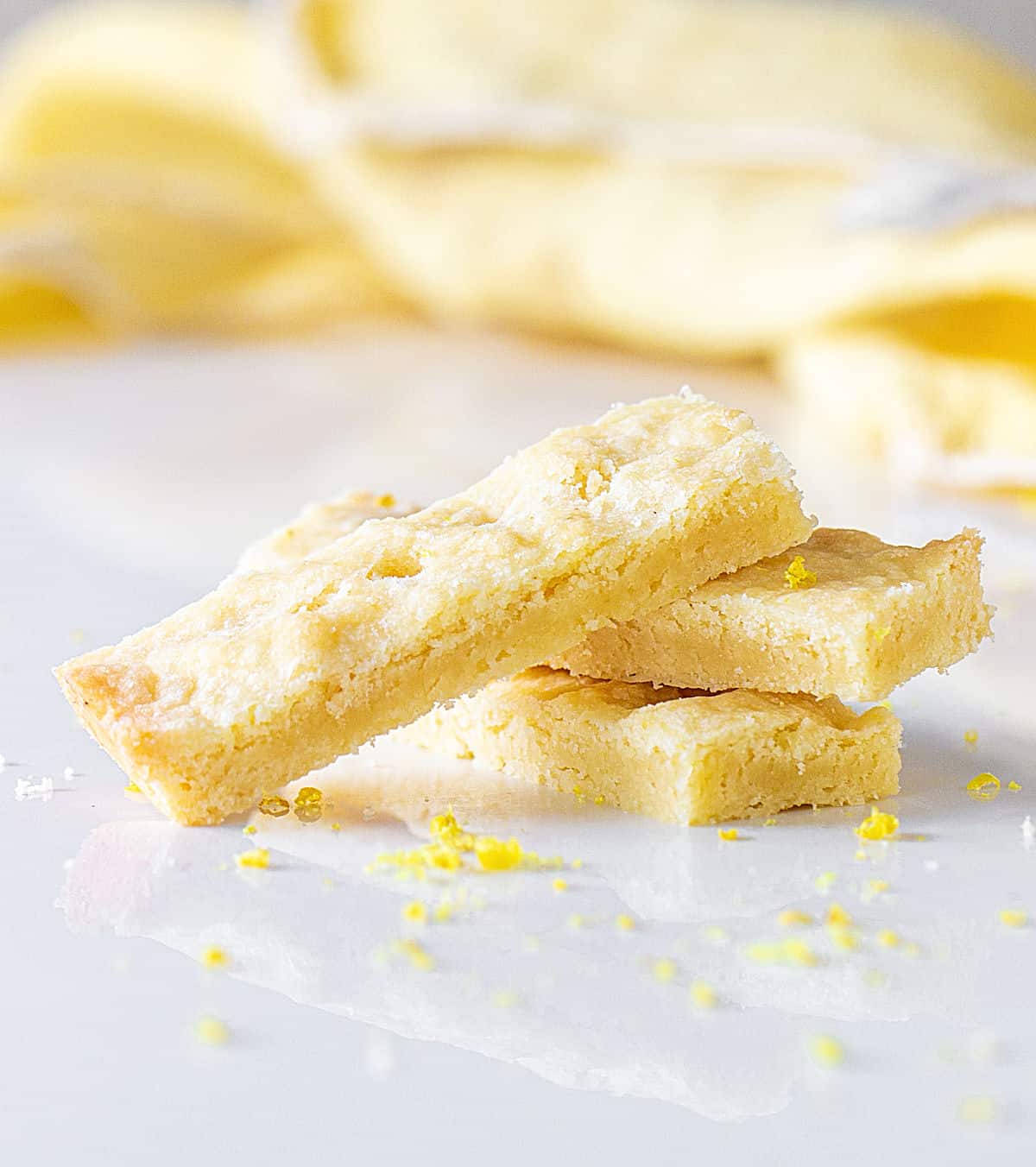
Adding extra lemon flavor
This lemon shortbread recipe uses a lot of butter and sugar, making it challenging to make the lemon flavor stand out. You can choose whether you like a hint of citrus or a brighter lemon flavor.
- Lemons: I love to use a lot of fresh lemon zest, and occasionally add fresh lemon juice. The latter can slightly change the texture as it's a liquid, so don't add too much.
- Lemon sugar: you can work the lemon zest into the sugar at the beginning, before adding it to the butter. The peel will start to release its natural oils and impregnate the sugar, adding an extra punch of tart lemon flavor.
- Lemon extract or emulsion can quickly and easily enhance the lemon flavor. I use pure ones like Nielsen Massey's pure lemon extract or Mc Cormick's culinary pure lemon extract. You can also use artificially flavored ones that you know are good, like Frontier lemon flavor.
- Paste and emulsion: these are thicker than extracts and concentrate a lot of flavor. I love and regularly use vanilla paste but have never tried a citrus alternative. But I heard good things from both Nielsen Massey's Pure lemon paste and LorAnn lemon emulsion.
Ingredient list
- Unsalted butter: use the best brand you can afford - the better the butter the better the flavor.
- Powdered sugar: also called confectioners' sugar or icing sugar.
- All-purpose flour.
- Salt.
- Lemon zest: freshly grated from fresh lemons to get the best lemon flavor. I use a microplane zester/grater directly over the shortbread dough.
- Granulated white sugar.
- Vanilla extract.
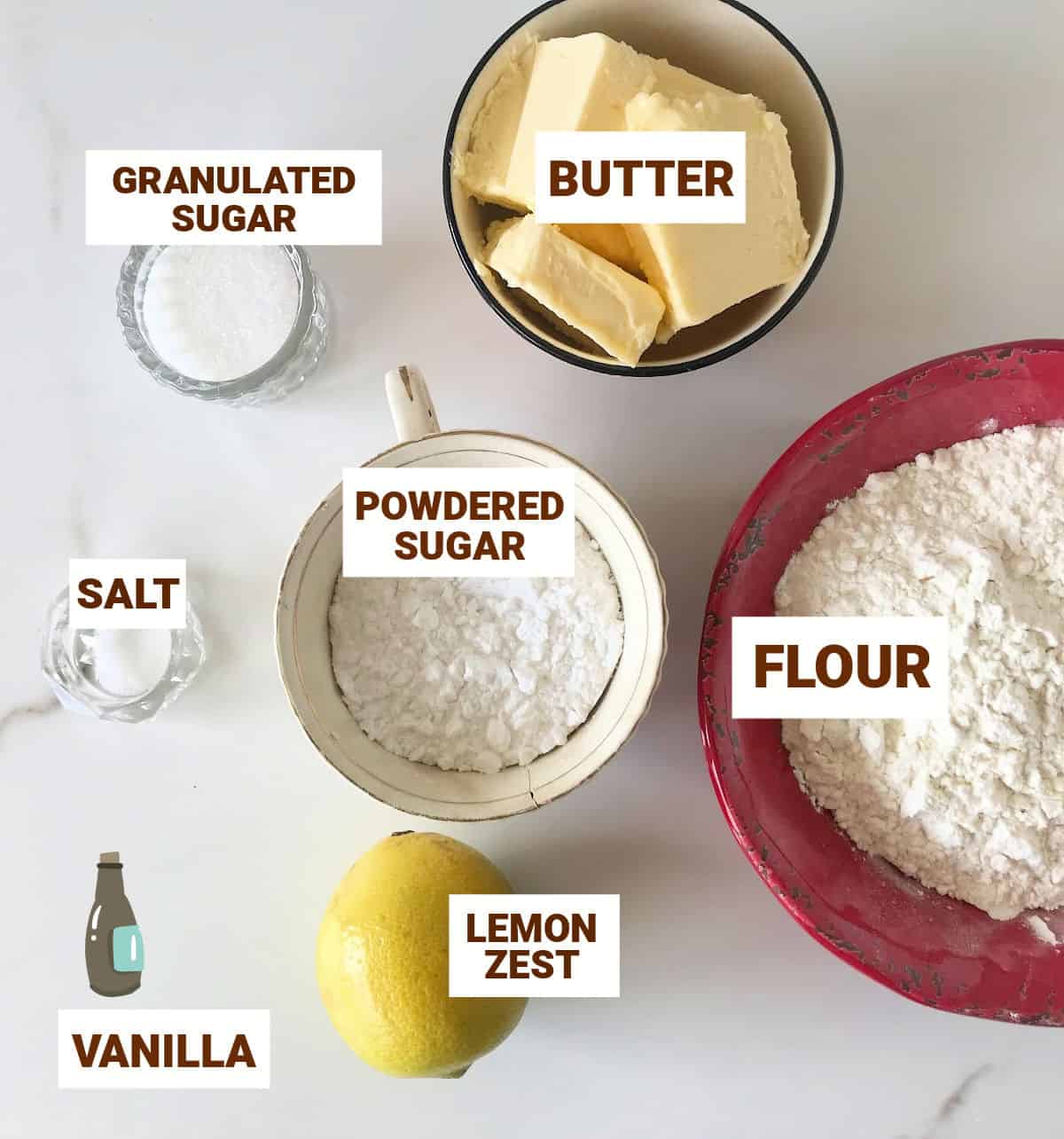
Steps to make lemon shortbread
No need for an electric mixer. You only need a spatula or hand whisk.
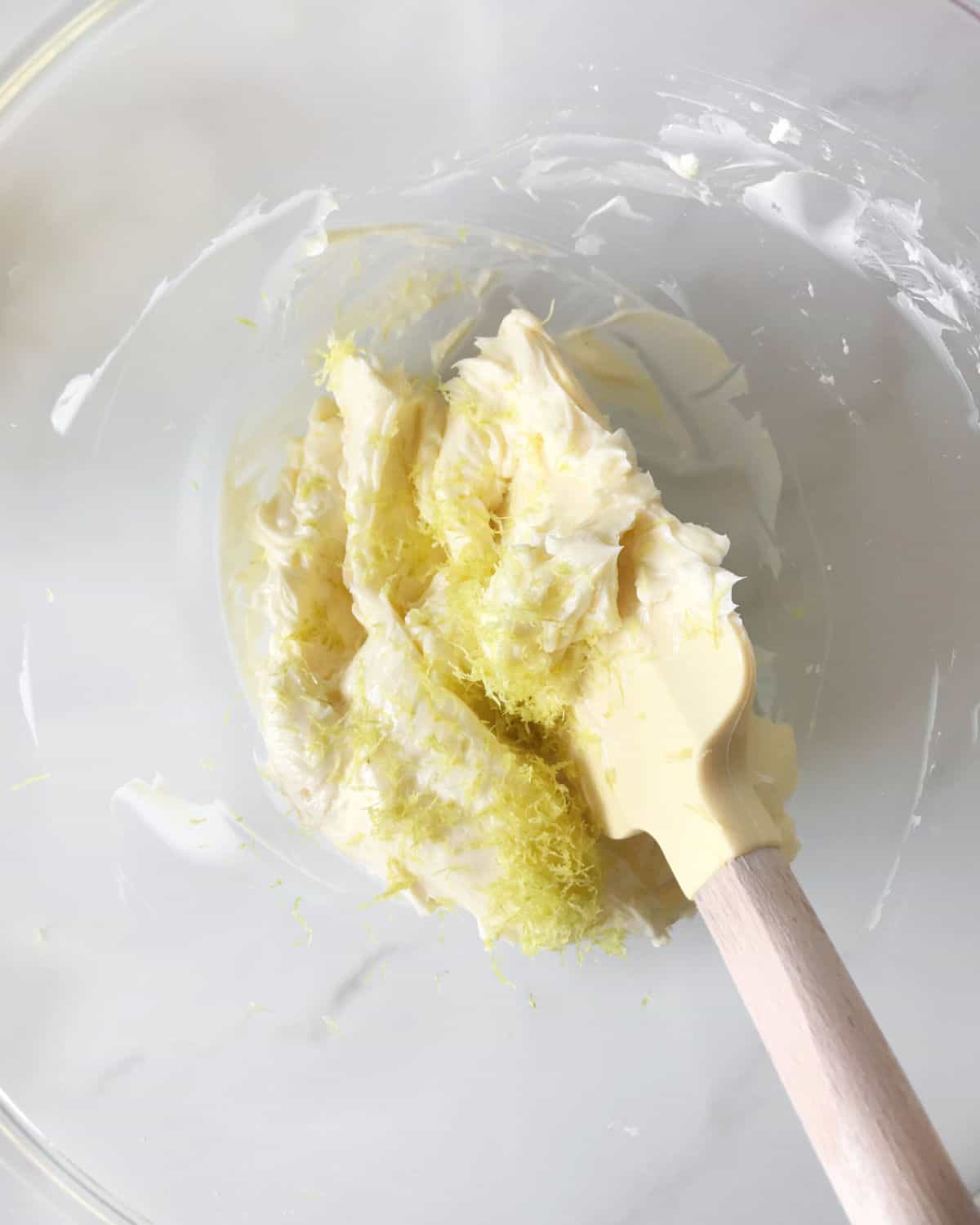
Butter must be at room temperature (soft but not greasy or beginning to melt), and you should be able to mix everything with a spatula. If using extra flavorings, this is when you add them together with the lemon peel.
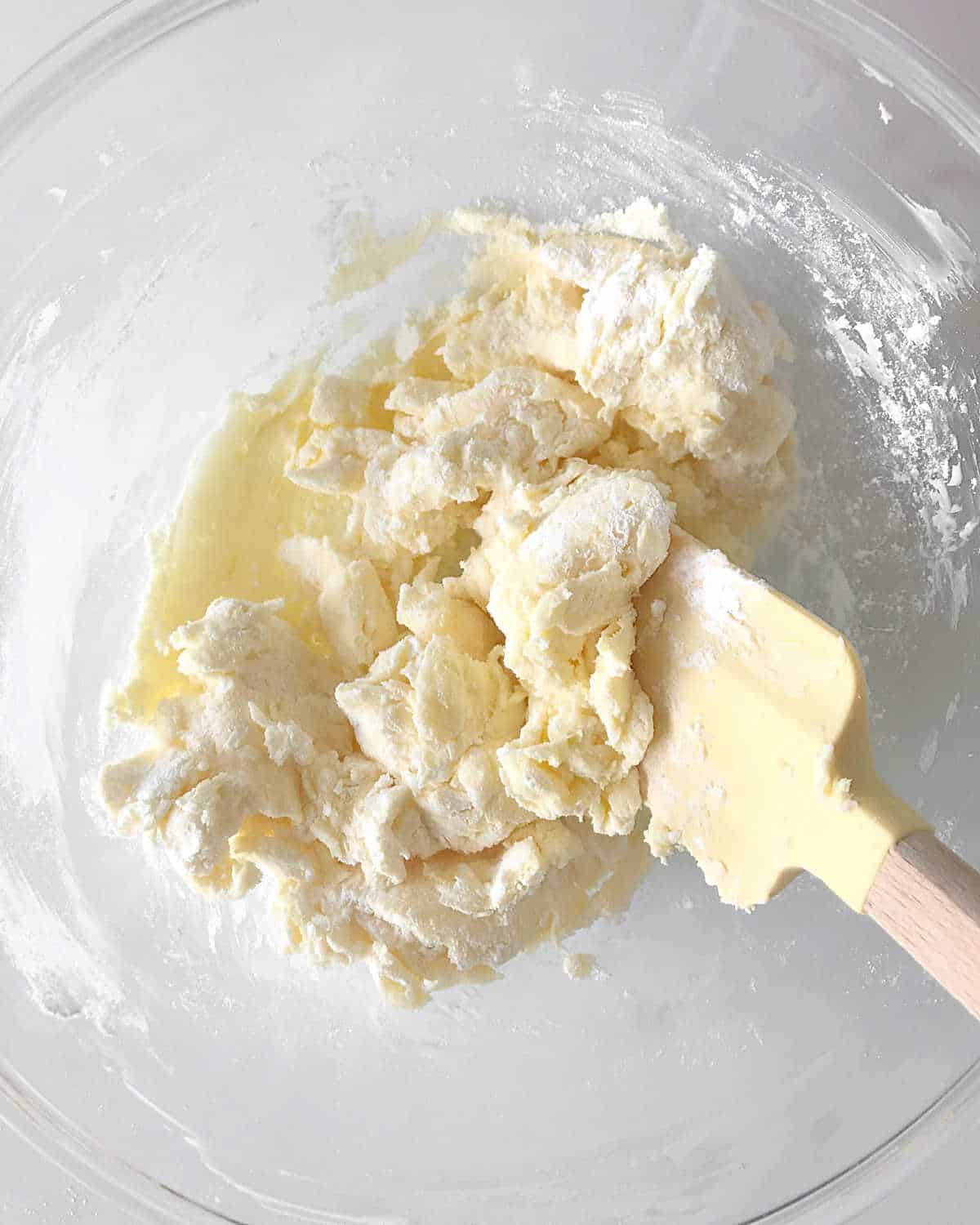
It can look like you won't be able to incorporate all the dry ingredients, but you will. With a flat rubber spatula, you can fold and scrape the mixture until the flour integrates fully.
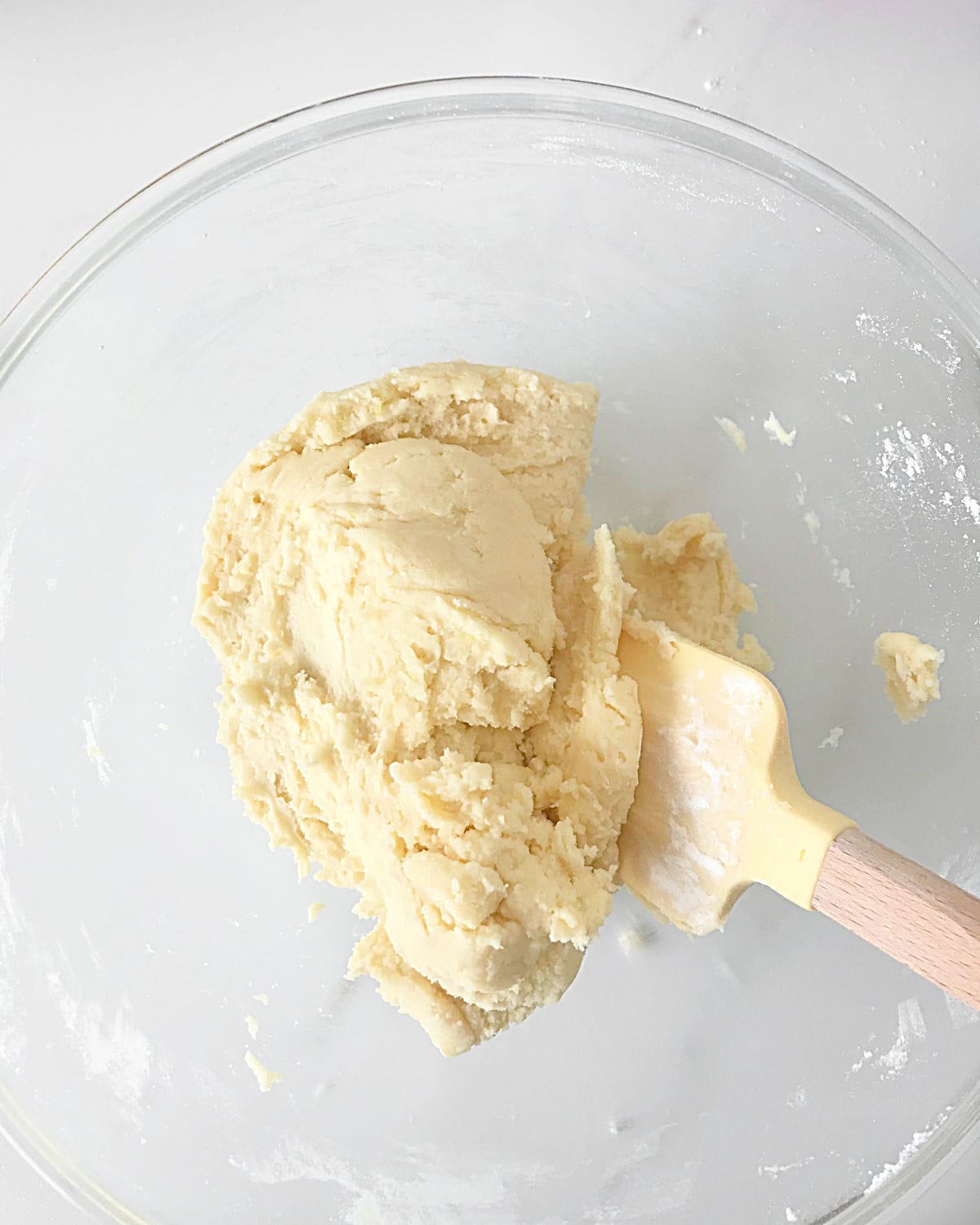
Trust the process, and in a few minutes, you'll have a soft, easy-to-manage dough.
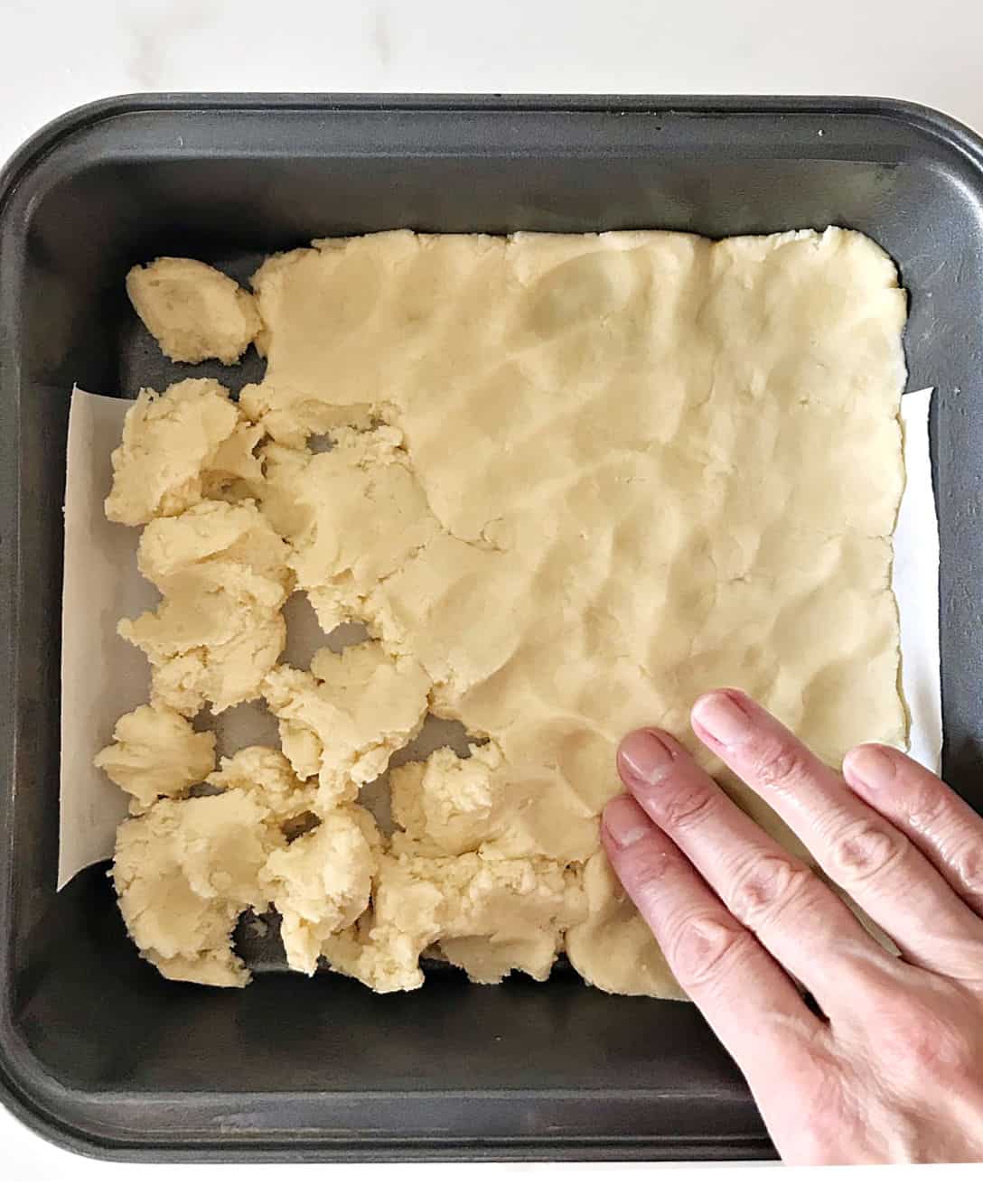
Patting the dough: the best way to fill the pan is to distribute pieces of dough throughout the bottom. That way, when you spread it, it will be better leveled. If you dump it all in the middle and start to pat it with your fingers, it will be harder to reach the edges.
Crunchy topping
Shortbread will get a crisp top if it's golden brown.
In this version, we supercharge that step by sprinkling a tablespoon or two of sugar before baking. It will stay put (not seep into the dough) and add a nice crunch.
This is optional but highly recommended. You can use brown sugar for a more caramel crunch.

Baking and cutting
When is it fully baked?
This is a great question, as it usually has people going for either the barely colored shortbread or the golden finish. Just like with cookies, it depends on personal taste. Do you like softer, lighter cookies, or go for the crisper, colored ones?
I alternate between both but tend to like a crispier, golden-colored shortbread.
Scoring and cutting
This part is essential, and you must do it while the shortbread is still hot, about ten minutes after you take it out of the oven.
Using a smooth-bladed knife, cut strips lengthwise and then do the same to the other side, creating a criss-cross pattern (image below).
Alternatively, cut squares or triangles (cut squares in half diagonally).
Shortbread is very rich so smaller pieces are usually better.
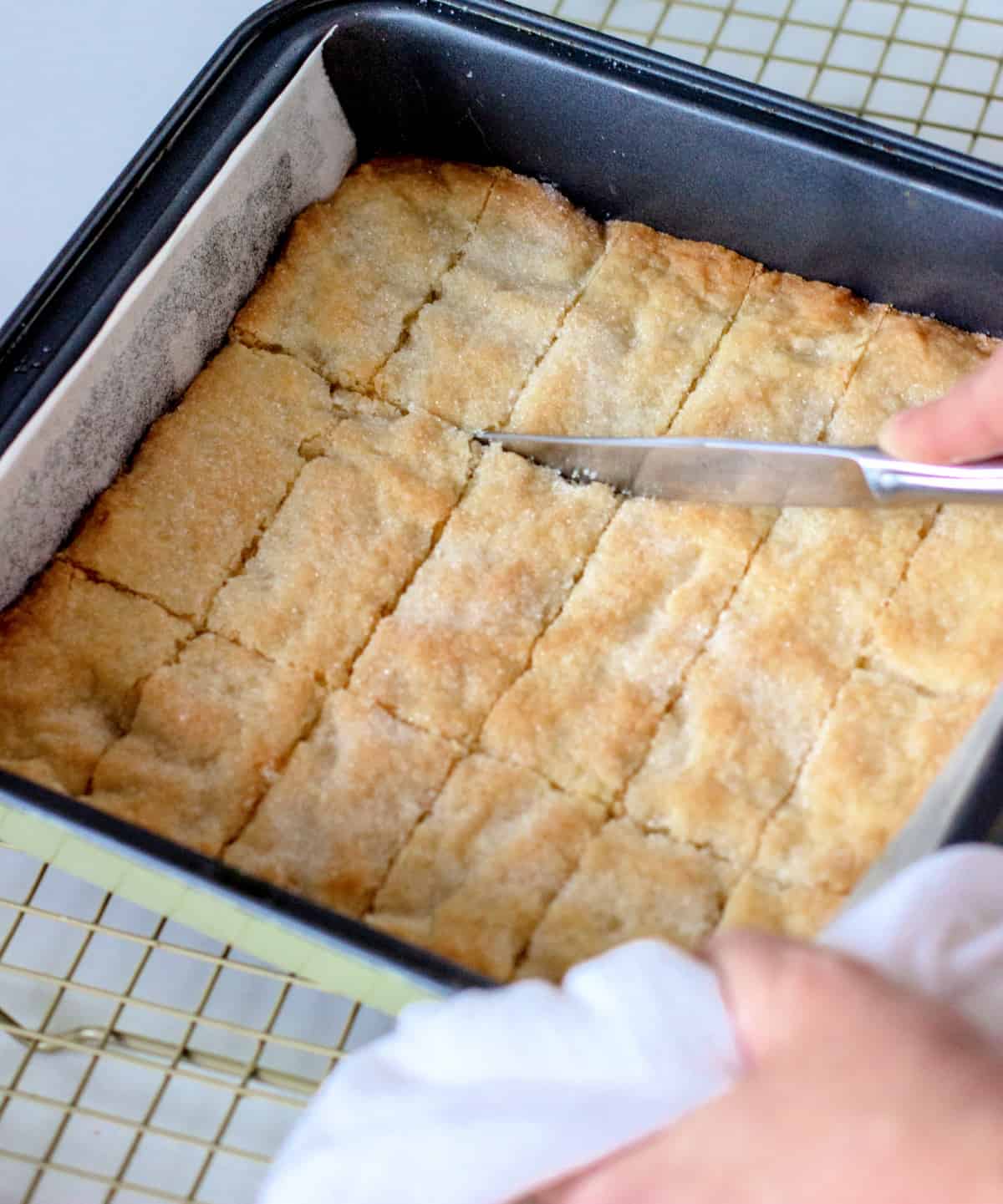
I find that it's better a few days after it's baked because the flavors are more balanced. You have to store them in a tightly closed tin (ideally) so that they don't lose their crunchiness.
We do it to prevent the butter from melting before the shortbread is baked. A cold dough will bake better and not be tough, which is crucial to getting that buttery, crunchy bite.
Yes, you can. Either the unbaked dough already in the pan or the baked cookies or fingers. This last option I recommend doing so after cutting and separating the pieces. And always remember to wrap the pan or the cookies well to avoid as much freezer burn and ice as you can.
In an airtight tin, it can last a week or two. This will depend on how it was baked. Slow, even baking produces crunchier shortbread that is drier so it lasts longer.
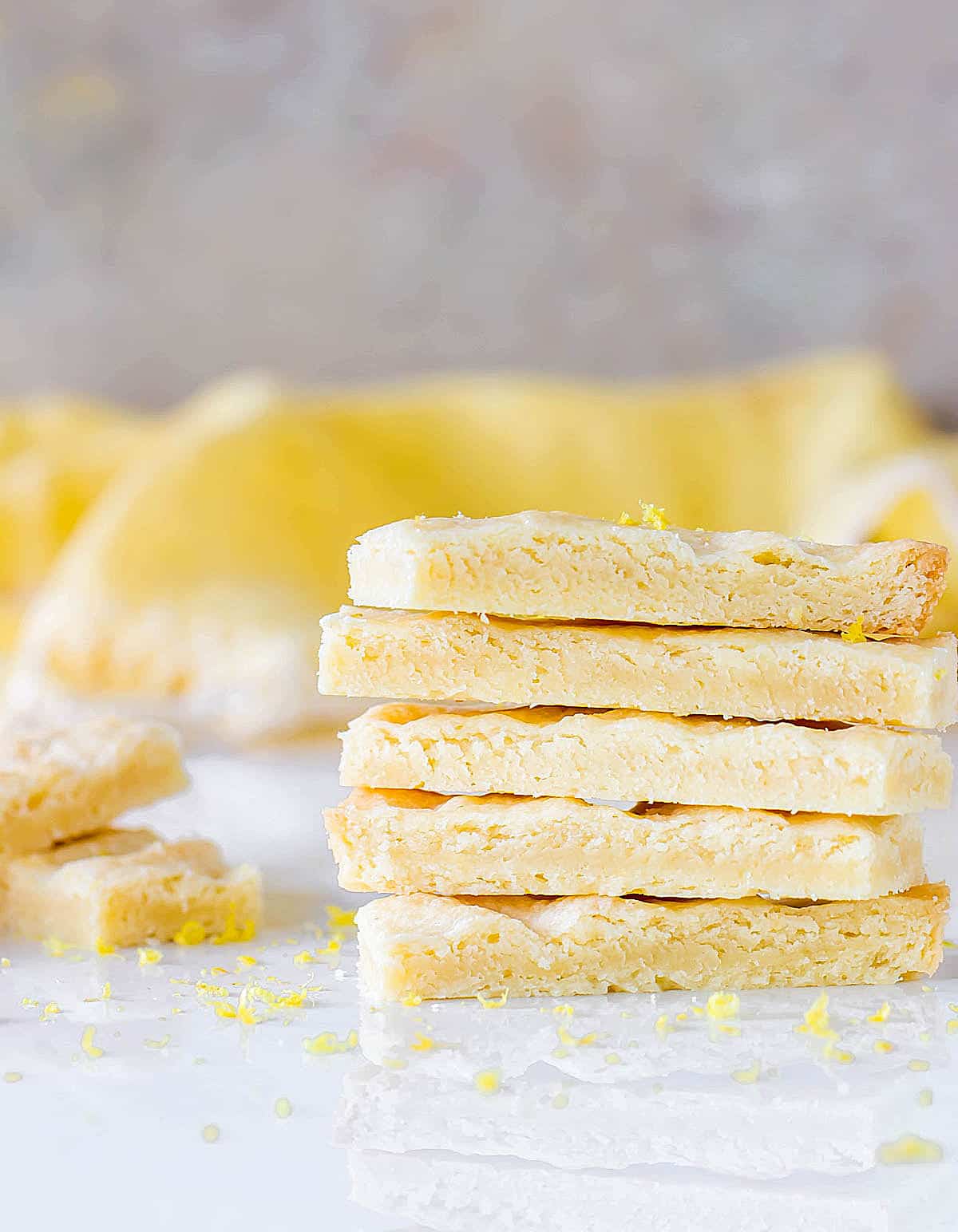
Kitchen Notes
- Organization: read the recipe first and ensure you have ingredients at the correct temperature, utensils and equipment needed, and enough workspace. This will make the process so much easier.
- Baking time: consider that all ovens and pans are different, even if they look similar. The baking time in my recipes is as accurate as possible, but it might take you more or less time. You can use a thermometer(like the OXO oven thermometer) to check that your oven is at the right temperature. I recommend keeping track of how your oven works and what tiny details you might need to adjust.
- Is the resting period needed? You can bake it directly, but the refrigeration time makes for a more tender, melt-in-your-mouth shortbread. I think it's worth the wait, but you should adjust recipes to your timeline and palate.
- Storing: it keeps well for a week or more after you cut it, so it's great for gift-giving. Always use an airtight container, ideally a metal one or a jar.
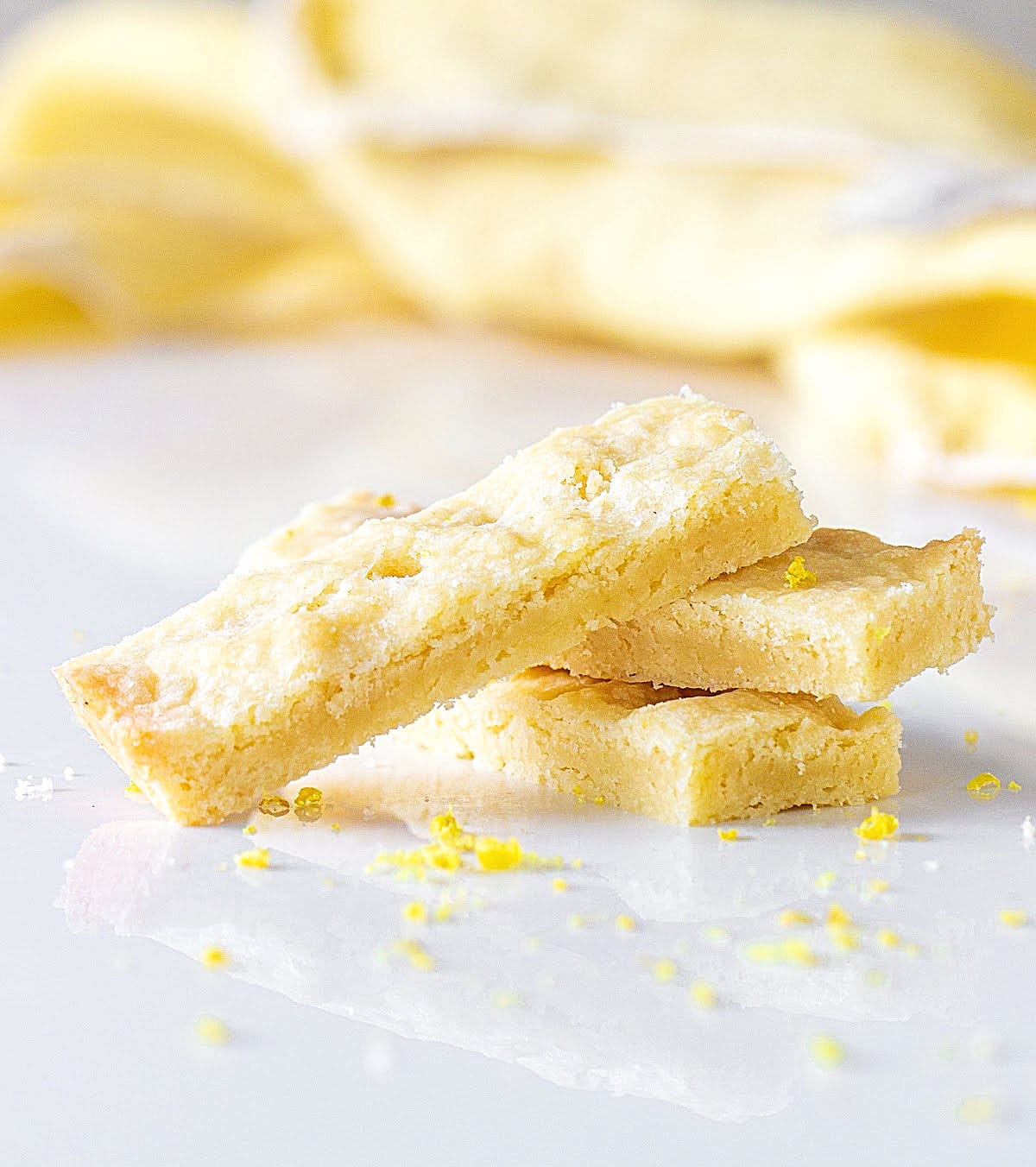
Holiday ideas with this recipe
It all comes down to different flavorings and toppings. Make a large batch, double (or triple?) this recipe. If using a stand mixer, mi with the paddle attachment at low speed.
Flavorings: divide the dough and add different flavorings to each portion, in addition to the lemon. Add another citrus, a ground spice (like cardamom that goes very well with lemon), or ground nuts.
Different shapes: I cut them into sticks but can be cut into triangles, squares, or diamonds.
Toppings: drizzle them with a simple lemon glaze made with powdered sugar and lemon juice (similar to the one we use for the Lemon Shortbread Cookies) or a thin chocolate ganache. Before the glaze sets, you can sprinkle citrus zest, ground nuts, or festive sprinkles.
Gifting: layer the dry ingredients in an airtight jar, attach a nice card with the instructions to make the shortbread, and give them out as gifts during the holiday season.
Related recipes you might like:
Before you go
If you made this recipe and loved it, you can comment below and leave a five-star ⭐️ review. Also, if you had issues, let me know so we can troubleshoot together.
You can also subscribe to our FREE email series 'Baking the Best' and our regular newsletter. Or follow and save my recipes on Pinterest.
As an Amazon Associate, I earn from qualifying purchases. Read my disclosure policy.
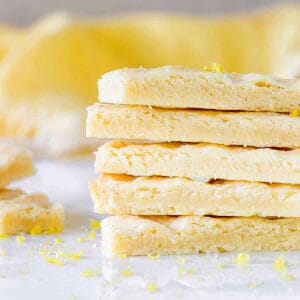
Lemon Shortbread (buttery and easy)
Ingredients
- ¾ cup unsalted butter, at room temperature
- 1 ¼ cups all-purpose flour, or cake flour
- pinch of salt
- 2 tablespoons lemon zest, see Notes below for extra lemon flavor
- ⅛ teaspoon vanilla extract, drops, literally
- ½ cup powdered sugar, sifted
- 1 tablespoon granulated sugar, for topping
Instructions
- Have ready a 9-inch (20x20cm) square baking pan that has been buttered or sprayed with baking spray.
- Line it with parchment paper: take a large piece of parchment paper of about 8 inches (almost as wide as the pan) and cover the bottom and two sides of the pan. The other two sides will remain buttered but not lined with paper. This will help you remove the shortbread after it's baked.
- In a large bowl, mix ¾ cup unsalted butter with 2 tablespoons lemon zest (I zest it directly over the butter mixture using a microplane zester) and ⅛ teaspoon vanilla extract.
- Add ½ cup powdered sugar and incorporate well so there are no lumps. I recommend sifting the sugar before adding it, or sifting it directly over the butter mixture as I do.
- Add 1 ¼ cups all-purpose flour and pinch of salt in 2 parts, mixing with the spatula until it is smooth, well combined and no dry spots remain.
- Transfer the dough to the prepared pan, scattering small amounts on the bottom.
- Lightly pat the dough with your hand until it covers the whole surface. Make sure the edges are covered. Make it as even as possible, but relax because it will not be completely smooth.
- Refrigerate the whole pan, covered in plastic wrap, for at least 1 hour (and up to 24 hours). You can bake it directly, but this resting time creates a more tender shortbread, in my experience.
- Preheat the oven to 325°F (160°C).
- Sprinkle 1 tablespoon granulated sugar over the top before baking.
- Bake the shortbread for 40-45 minutes, until the top is dry, has puffed slightly and is beginning to color. You can leave it a few more minutes for a more golden shortbread. Just don’t let it dry out.
- Let cool for 10 minutes on a wire rack and carefully cut into sticks, squares or triangles with a smooth-bladed knife.
- Let cool on the cooling rack completely, lift the whole square of the pan with the aid of the parchment paper, and carefully break each piece.
- Keep in airtight cookie jars or tins.
Notes
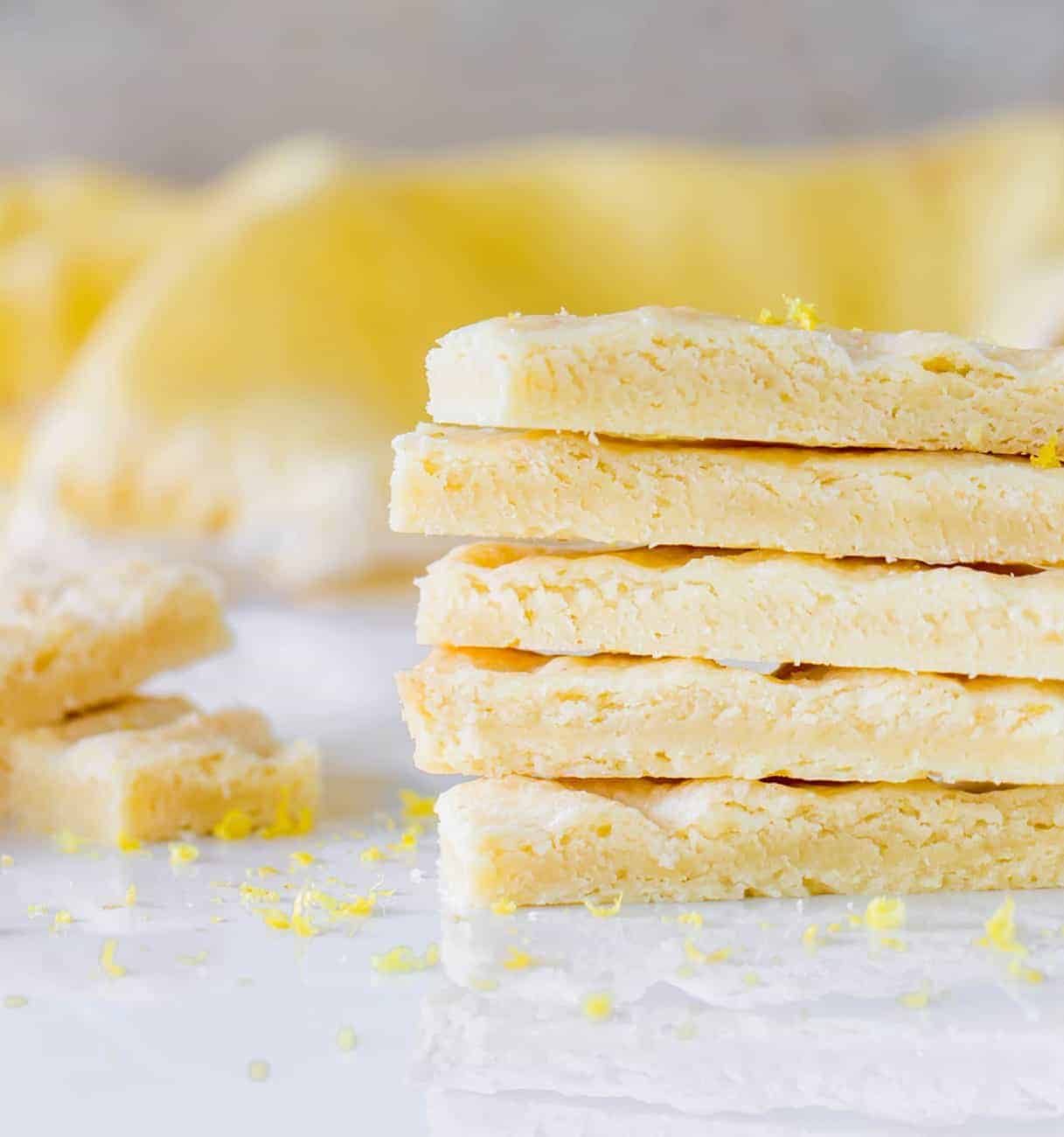

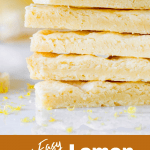

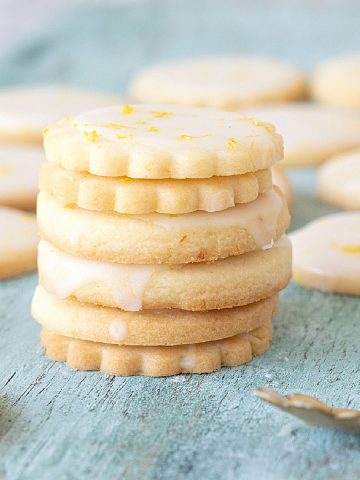
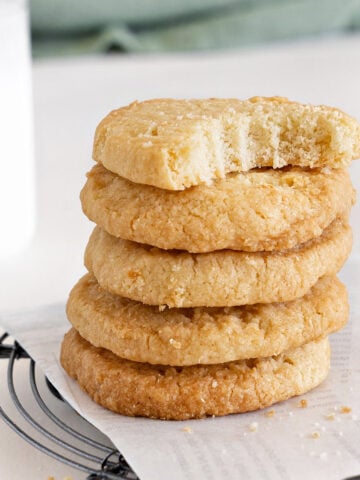
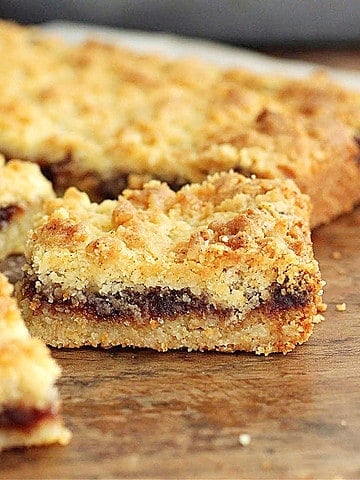
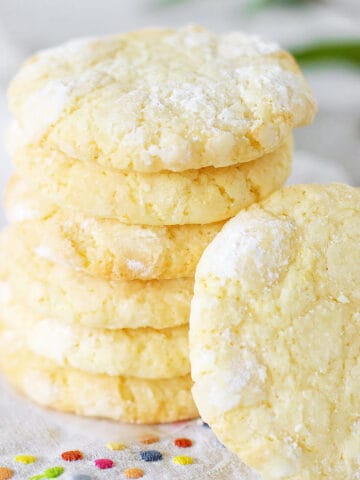
Anonymous says
Very informative background information and a simple, really tasty recipe.
Anonymous says
These shortbreads were everything I expected and more. Thank you for the detailed recipe Paula.
Denise says
Delish! Will dip half of bar in melted Ghirardelli White Chocolate and sprinkle with Lemon zest next time I make these.
Paula Montenegro says
Happy to know you loved it Denise! I have drizzled it with dark chocolate but not white. Will definitely try it soon!